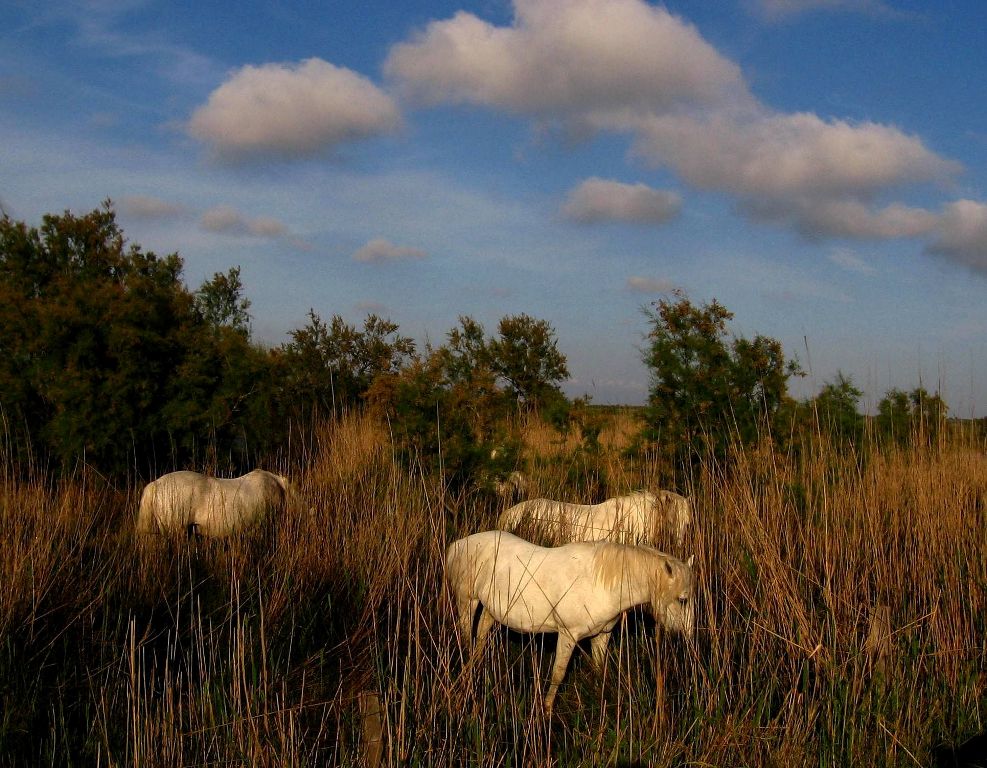The flora and nature of CamargueCamargue was established as natural park in 1927. People are now trying to maintain this fragile ecosystem from industry, agriculture, hunting and other human activities. Northern part of Camargue is mostly agricultural land with grapevines rice and cereals. South and centre of Camargue is mostly natural area known for amazing saline area. The whole flora is adapted to Camargue conditions. Tamarisks, reeds, juniper trees, wild irises and rosemary grow along with glasswort and sea lavender. Juniper trees can grow in the woodland to 6m. Woodland areas are here to give home to mammals like foxes, rodents, insects and wild boars. Insects attract night herons and little egrets which are typical nesting birds. Camargue region is actually delta where two parts of River Rhone meet Mediteranean sea. Most of Camargue is considered as natural park and home of many great species of fauna and flora. There is also interesting Museum that lies South of Arles. Agricultural is Camargue park interesting for its rice that is main crop in France. They have also large harvests of salt, they are harvesting salt mostly in dry summer period, but in winter you can admire huge salt dunes.
|
